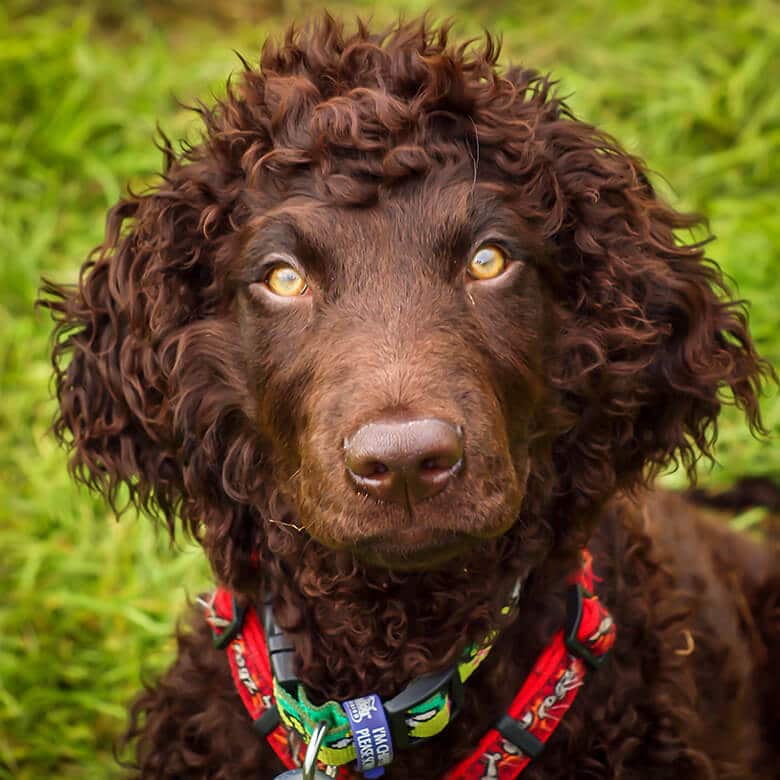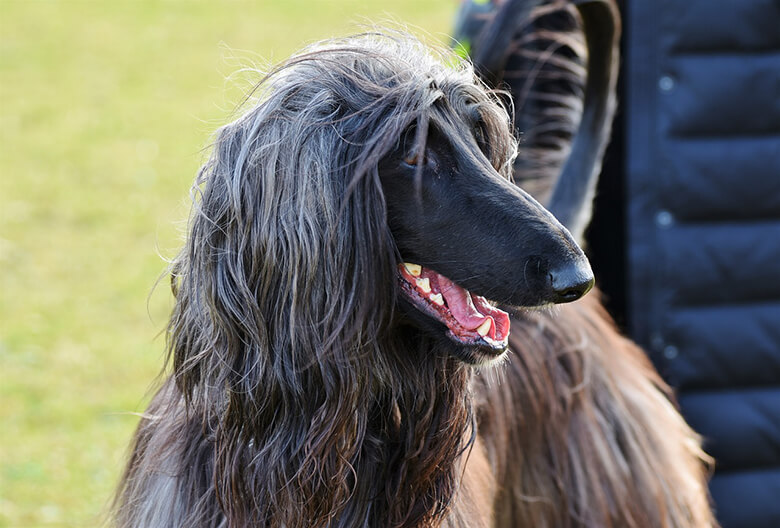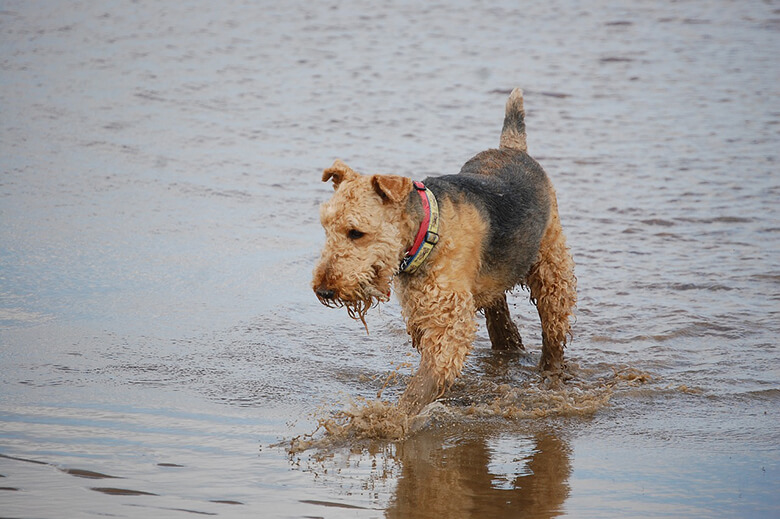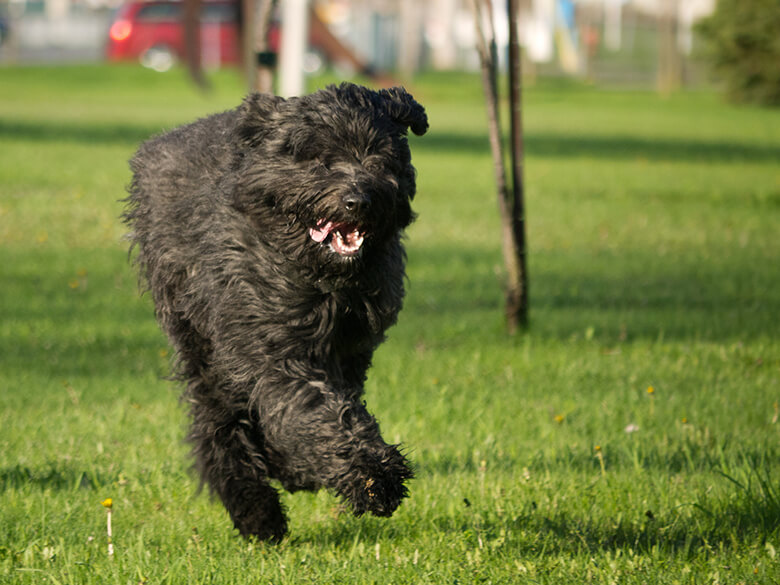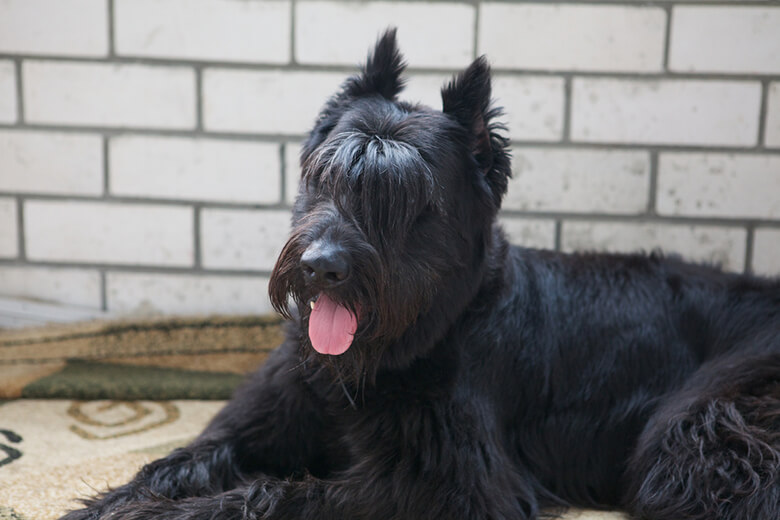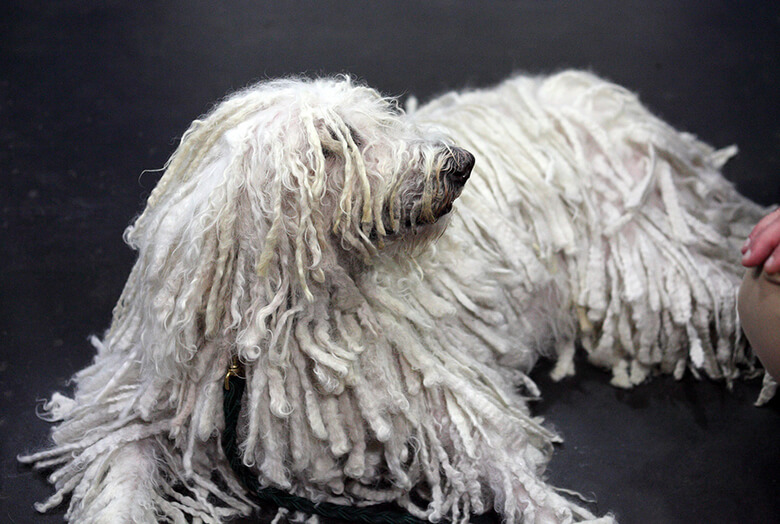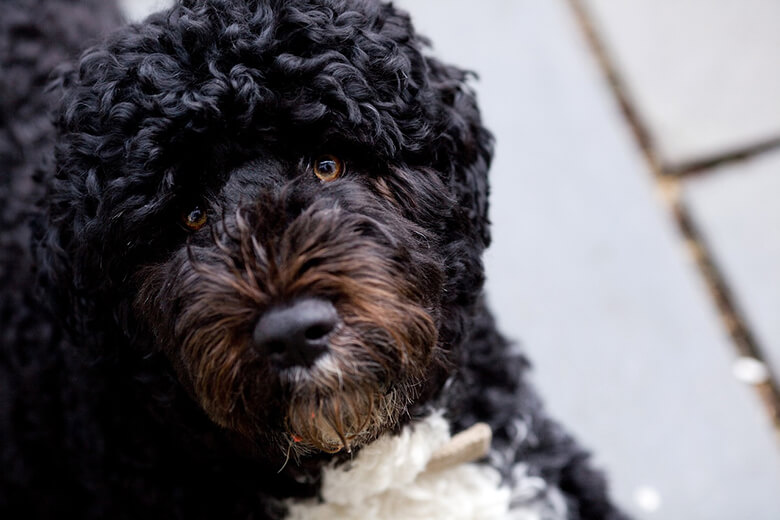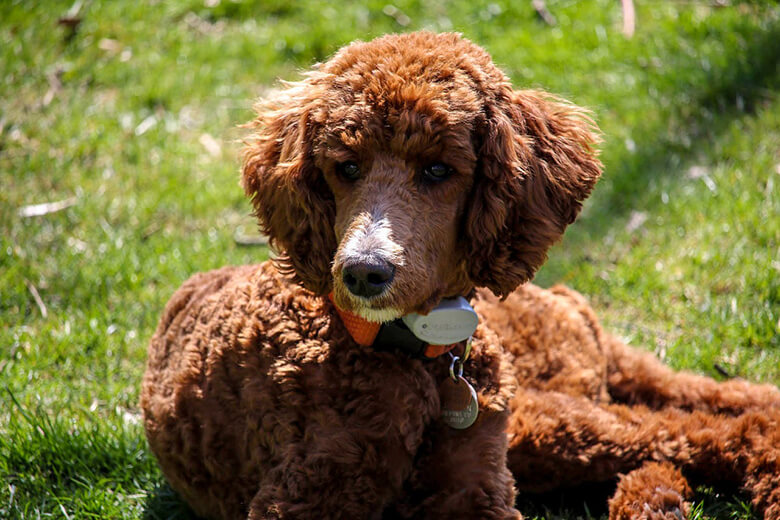If you think large dogs shed more hair than small dogs, you’d be right…and wrong. Some large breed dogs shed very little to nothing at all.
Keep in mind, no dog is completely hypoallergenic, but allergy sufferers do well with the breeds that do not shed — and produce less dander. It’s not the hair people are allergic to, it’s the dander. Pet dander is particles of dead skill that flake off and go airborne. The dander triggers the immune systems of people with an allergy, and that’s what causes the red, itchy eyes and the sneezing. Dander is attached to the hair, so dogs that don’t shed emit minimal dander.
So, if you’re one of those unfortunate souls who sneeze (and sneeze and sneeze) whenever a dog is around, these breeds may be for.
Related: 8 Dog Breeds That Are at a Higher Risk of Getting Dental Disease
Large Dogs that Don’t Shed
1. Afghan Hound
With all that hair, it may be hard to believe, but this breed is actually hypoallergenic. That long, thick, silky coat needs lots of grooming, Plan to devote several hours each week to brushing and combing. Regular bathing is also required, and this breed needs conditioner! They have been called clownish as they tend to be mischievous, but adult dogs are independent. When the Afghan wants affection, he’ll let you know, but otherwise, he can be aloof.
Height: 27-29 inches; Weight: 50-64 pounds
2. Airedale Terrier
One of the largest terriers, Airdale terriers have a short, wiry coat that need only weekly brushing to remove dead hair and infrequent bathing. Professional grooming is only necessary 3 or 4 times a year to trim and strip the coat. They are intelligent and very energetic dogs that need an active daily routine to be happy. They are affectionate, protective and loyal to their family. Airedales love to dig, chase smaller animals, and they can be stubborn and willful.
Height: 21 to 23 inches; Weight: 40 to 65 pounds
3. Bouvier des Flandres
With a very thick, rough coat and a ginormous head that’s covered in long, dense fur, the Bouvier appears massive, powerful and a bit scruffy. They need to be groomed several times a week with a steel comb. Their thick coat tends to pick up lots of debris and other nasty things, so spot bathing is often required along with professional grooming every 3-4 months. They are gentle, affectionate, confident dogs that need vigorous daily exercise.
Height: 24 to 28 inches; Weight: 69 to 90 pounds
Related: 5 Medium-Sized Dog Breeds Who Are a Blessing for Those With Allergies
4. Giant Schnauzer
Their double coat consists of a harsh, wiry weatherproof outer coat and a soft undercoat, and they sport the trademark Schnauzer long eyebrows, whiskers, and beard. Giant Schnauzers should be brushed at least 3 times a week, and every 4 to 6 months. They may require hand stripping, which is the process of removing dead hair from the dog’s coat. They are intelligent, herding dogs that need a job or daily activity to keep them playful and happy.
Height: 23 to 28 inches; Weight: 60 to 100 pounds
5. Irish Water Spaniel
Their thick, curly double coat makes them high maintenance in terms of grooming. They need daily brushing and regular visits to a professional groomer, but they only need bathing infrequently when necessary. Bred to hunt and retrieve birds from the water, they love swimming. They’re goofy, funny, playful dogs that require daily exercise.
Height: 21 to 24 inches; Weight: 45 to 58 pounds
Related: 6 of the Most Popular Dog Breeds That Are Also Super Expensive
6. Komondor
This breed has a unique, corded coat that helped them blend it with the sheep they herded. The long, soft, white dreadlocks are heavy, and they need lots of maintenance. Once the cords have formed, they need to be separated regularly to keep them clean and mat-free. Bathing is a major project, and it can take them all day to dry. They are calm, gentle, loving dogs that are natural guardians.
Height: 25.5 to 27.5 inches; Weight: 70 to 80 pounds
7. Portuguese Water Dog
The single coat of this breed is what makes it hypoallergenic. (It’s the undercoat that allergy sufferers tend to react to). Their coat can be curly or wavy, and it needs to be brushed or comb two or three times a week. Bred to serve as part of the crew on fishing trips, they retrieved gear and herded fish into the nets. These dogs love to play and have fun. They are intelligent, loving, with a ton of energy, needing 30 minutes to an hour of exercise every day.
Height: 17 inches to 22 inches tall; Weight: 35 to 60 pounds
8. Standard Poodle
The largest of the poodle, this breed is elegant, clever, extremely friendly and fun-loving. They’re great with children, affectionate with family and excel in sports like agility. The coat comes in curly or corded (yes, there is a dreadlocked poodle), and they do not shed. Curly poodles need to be brushed to keep the coat in good condition, but do not brush a corded poodle. Instead, manually separate mats by pulling them apart with your fingers.
Height: 15 to 24 inches; Weight: 45 to 70 pounds













